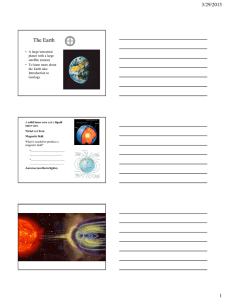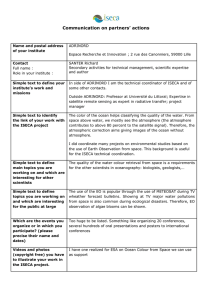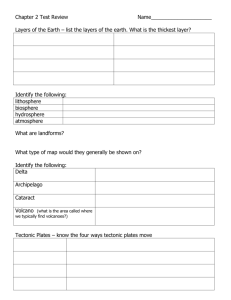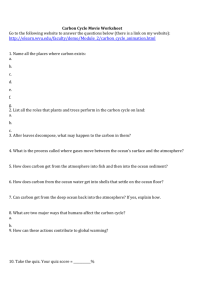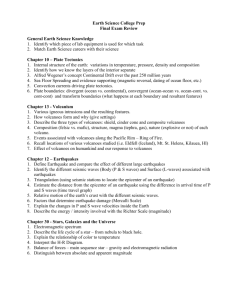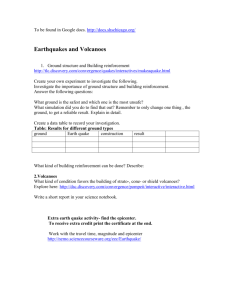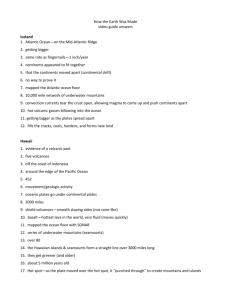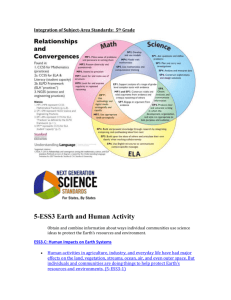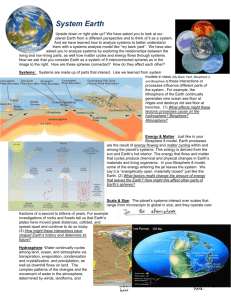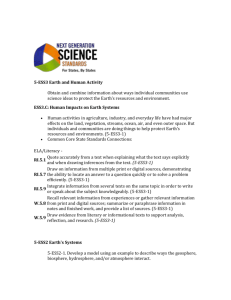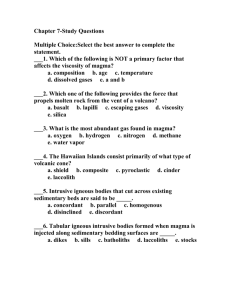Final Review Sheet Unit 1: The rock cycle: Explain how each form
advertisement
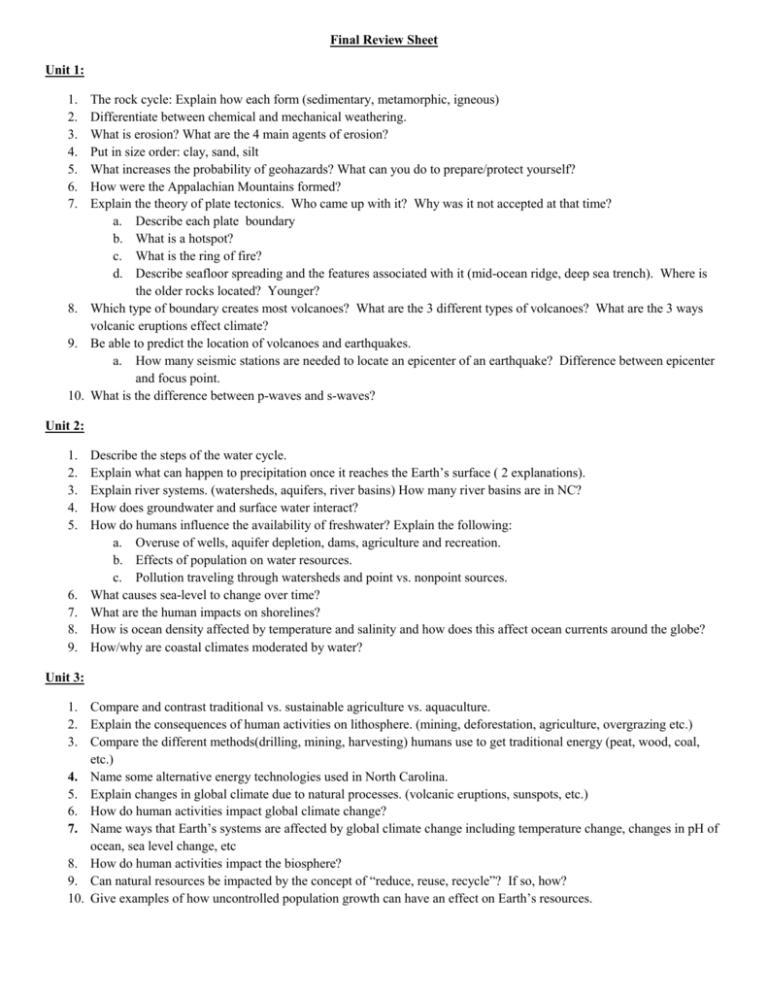
Final Review Sheet Unit 1: 1. 2. 3. 4. 5. 6. 7. The rock cycle: Explain how each form (sedimentary, metamorphic, igneous) Differentiate between chemical and mechanical weathering. What is erosion? What are the 4 main agents of erosion? Put in size order: clay, sand, silt What increases the probability of geohazards? What can you do to prepare/protect yourself? How were the Appalachian Mountains formed? Explain the theory of plate tectonics. Who came up with it? Why was it not accepted at that time? a. Describe each plate boundary b. What is a hotspot? c. What is the ring of fire? d. Describe seafloor spreading and the features associated with it (mid-ocean ridge, deep sea trench). Where is the older rocks located? Younger? 8. Which type of boundary creates most volcanoes? What are the 3 different types of volcanoes? What are the 3 ways volcanic eruptions effect climate? 9. Be able to predict the location of volcanoes and earthquakes. a. How many seismic stations are needed to locate an epicenter of an earthquake? Difference between epicenter and focus point. 10. What is the difference between p-waves and s-waves? Unit 2: 1. 2. 3. 4. 5. 6. 7. 8. 9. Describe the steps of the water cycle. Explain what can happen to precipitation once it reaches the Earth’s surface ( 2 explanations). Explain river systems. (watersheds, aquifers, river basins) How many river basins are in NC? How does groundwater and surface water interact? How do humans influence the availability of freshwater? Explain the following: a. Overuse of wells, aquifer depletion, dams, agriculture and recreation. b. Effects of population on water resources. c. Pollution traveling through watersheds and point vs. nonpoint sources. What causes sea-level to change over time? What are the human impacts on shorelines? How is ocean density affected by temperature and salinity and how does this affect ocean currents around the globe? How/why are coastal climates moderated by water? Unit 3: 1. Compare and contrast traditional vs. sustainable agriculture vs. aquaculture. 2. Explain the consequences of human activities on lithosphere. (mining, deforestation, agriculture, overgrazing etc.) 3. Compare the different methods(drilling, mining, harvesting) humans use to get traditional energy (peat, wood, coal, etc.) 4. Name some alternative energy technologies used in North Carolina. 5. Explain changes in global climate due to natural processes. (volcanic eruptions, sunspots, etc.) 6. How do human activities impact global climate change? 7. Name ways that Earth’s systems are affected by global climate change including temperature change, changes in pH of ocean, sea level change, etc 8. How do human activities impact the biosphere? 9. Can natural resources be impacted by the concept of “reduce, reuse, recycle”? If so, how? 10. Give examples of how uncontrolled population growth can have an effect on Earth’s resources. Unit 4: 1. 2. 3. 4. 5. 6. 7. What are the 3 theories to the origin of the universe? List the organization of our universe from largest to smallest. Explain Earth’s motion through space. (precession, nutation, barycenter and Kepler’s laws) Contrast rotation and revolution. How are the tides affected by the Moon and Sun? What is the actual shape of the Earth? What force causes it not to be a perfect circle? How does solar energy reach Earth? Why is solar energy so important to life on Earth? Unit 5: 1. Know the layers of our atmosphere? (temperature of each, what is found in each layer (weather takes place? Ozone layer located?) 2. What are the main gases of our atmosphere? 3. Differences in the layers – 4. How do air masses form and interact? 5. How do cyclones/hurricanes form and how do they influence winds, fronts and storm systems? 6. What are some precautions people can take to protect themselves and property from severe storms? 7. Be able to predict the weather based on maps and data. a. What are isopleths, isobars, isotherms? b. Know the symbols for each type of front and the type of weather associated with each. c. Know how to read a station model. 8. What kind of affects do humans have on air quality? a. Causes of acid rain, decreased quality of atmosphere composition, name methods humans can lessen their impact on the atmosphere? 9. What is the difference between weather and climate? Unit 6: 1. 2. 3. 4. 5. 6. Know abiotic vs. biotic factors. How are biome classifications determined? (Ex. Types of plants and animals, temperature, rainfall, etc.) Why is biodiversity important to the biosphere? How are ecosystems changed? (types of succession) Know the 5 types of symbiotic relationships. Native vs. invasive species (problems associated with invasive species, etc.)
